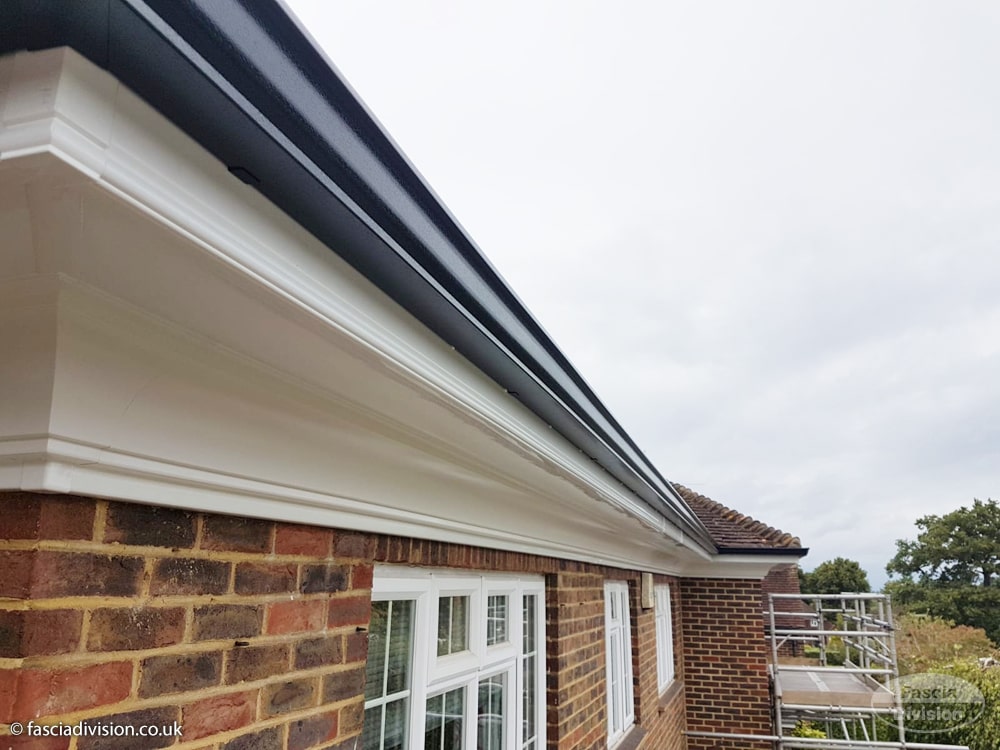
Gutter Replacement
Add a review FollowOverview
-
Sectors Installation, maintenance
-
Posted Jobs 0
-
Viewed 43
Company Description
7 Simple Secrets To Completely Doing The Fascia And Soffit
Understanding Fascia and Soffit: Key Components of Roofing and Exterior Design
When it comes to home building and design, every detail adds to the general longevity, functionality, and looks of the structure. Among these information, fascia and soffit play crucial roles in both performance and appearance. This post supplies a comprehensive understanding of fascia and soffit, their functions, products, maintenance, and installation practices.

What are Fascia and Soffit?
Fascia and soffit are important parts of a building’s roofing system, impacting its efficiency and appearance.
-
Fascia is the horizontal board that runs along the edge of the roofing system. It is typically connected to completions of the rafters and serves as a leader for rainwater from the roofing system, assisting to prevent moisture damage. Additionally, fascia boards offer a completed want to the roofing system’s edge and typically work as a mounting area for gutters.
-
Soffit is the underside of the eaves, bridging the gap in between the siding and the roofline. It is visible from the ground and can enhance the visual appeals of the building’s outside. More significantly, soffit plays a vital role in ventilation for the attic, assisting to manage temperature level and wetness, therefore avoiding mold and rot.
Why Are Fascia and Soffit Important?
Fascia and soffit add to the overall stability and look of a home. Here are some key points highlighting their value:
- Protection from Water Damage: Fascia directs water into the gutters, preventing it from permeating into the walls and structure.
- Ventilation: Soffit permits air flow into the attic space, assisting in temperature level policy.
- Aesthetic Appeal: Both fascia and soffit enhance the visual profile of a home, providing a polished and finished look.
- Pest Prevention: Properly installed soffits prevent pests such as birds, pests, and rodents from nesting in the eaves.
Typical Materials for Fascia and Soffit
Choosing the best materials for Fascia Installation and soffit is essential for toughness and maintenance. Here are the most common products used:
| Material | Description | Pros | Cons |
|---|---|---|---|
| Wood | Conventional material for fascia and soffit, readily available in various finishes. | High aesthetic appeal, adjustable. | Prone to rot without appropriate treatment. |
| Vinyl | A low-maintenance option, often available in multiple colors. | Resistant to rot, no painting needed. | Can become fragile gradually. |
| Aluminum | Lightweight and rust-resistant, often utilized in modern-day styles. | Resilient and lasting. | Damages easily, may require unique tools for installation. |
| Fiber Cement | A composite product that simulates wood however has higher resilience. | Fireproof and highly durable. | Heavier and more expensive. |
Installation of Fascia and Soffit
Correct installation is crucial to guaranteeing the longevity and efficiency of fascia and soffit. Here’s a concise guide for the installation process:
Fascia Installation
- Step and Cut: Measure the length of the fascia board needed and sufficed to size utilizing suitable tools.
- Assistance: Ensure the board is correctly supported against the ends of the rafters.
- Secure: Use corrosion-resistant screws or nails to secure the fascia board to the rafter ends.
- Complete: Depending on the material, use paint, stain, or sealant for added protection if required.
Soffit Installation
- Preparation: Start with the framing. Cutting back the overhang of the rafters for soffit installation.
- Ventilation: If using ventilated soffit, install it initially, guaranteeing holes line up with the attic area.
- Secure Panels: Attach the soffit panels, generally beginning with one end and working toward the other, guaranteeing they are protected sufficiently.
- Finish Edges: Finally, cap the edges to avoid water intrusion and supply a refined appearance.
Maintenance of Fascia and Soffit
Regular maintenance guarantees the durability of fascia and soffit. Here are some suggestions for keeping these essential elements:
- Inspect Regularly: Routine assessments for signs of rot, mold, or pest infestations are important.
- Cleansing: Gently clean fascia and soffit to get rid of debris, dirt, and mildew.
- Paint/Sealant: Reapply paint or sealant as required, specifically for wood materials that are vulnerable to damage.
- Check for Leaks: Ensure gutters are functioning correctly to avoid water from pooling against the fascia.
FAQs
Q1: How typically should I check my fascia and soffit?
It is suggested to inspect them at least two times a year, particularly after serious weather conditions.
Q2: Can I install fascia and soffit myself?
Yes, however it requires basic woodworking abilities and the right tools. If you’re not sure, it’s best to hire a professional.
Q3: What indications show that my fascia or soffit requirements replacing?
Keep an eye out for sagging, staining, peeling paint, signs of pests, or water damage, which all suggest it might be time for replacement.
Q4: Are there energy performance advantages associated with soffit ventilation?
Yes, correct ventilation reduces heat accumulation in the attic, enhancing energy efficiency by decreasing the load on a/c systems throughout hot months.
Q5: What is the ideal product for fascia and soffit?
The very best material depends upon your spending plan, climate considerations, and aesthetic preferences. Generally, vinyl or aluminum are preferred for low maintenance, while wood offers high aesthetic appeal but needs more upkeep.
Comprehending fascia and soffit is crucial for homeowners seeking to improve the performance and aesthetic appeal of their roofing systems. These elements play a considerable function in safeguarding your home from water damage, permitting for sufficient ventilation, and avoiding pest problems. By picking the best materials, making sure correct installation, and undertaking regular maintenance, property owners can make the most of the longevity and effectiveness of their fascia and soffit, adding to the general health and beauty of their homes.
